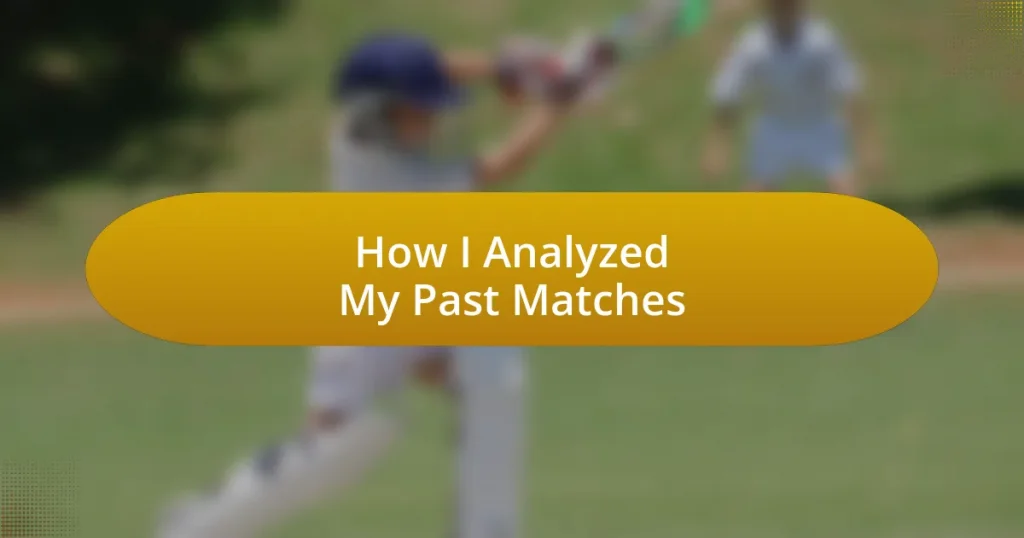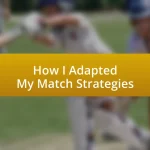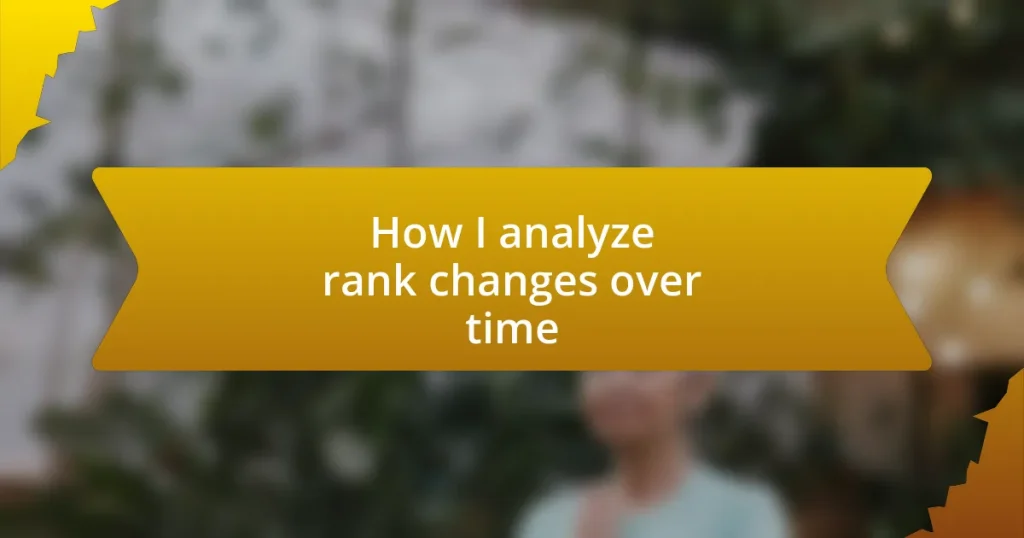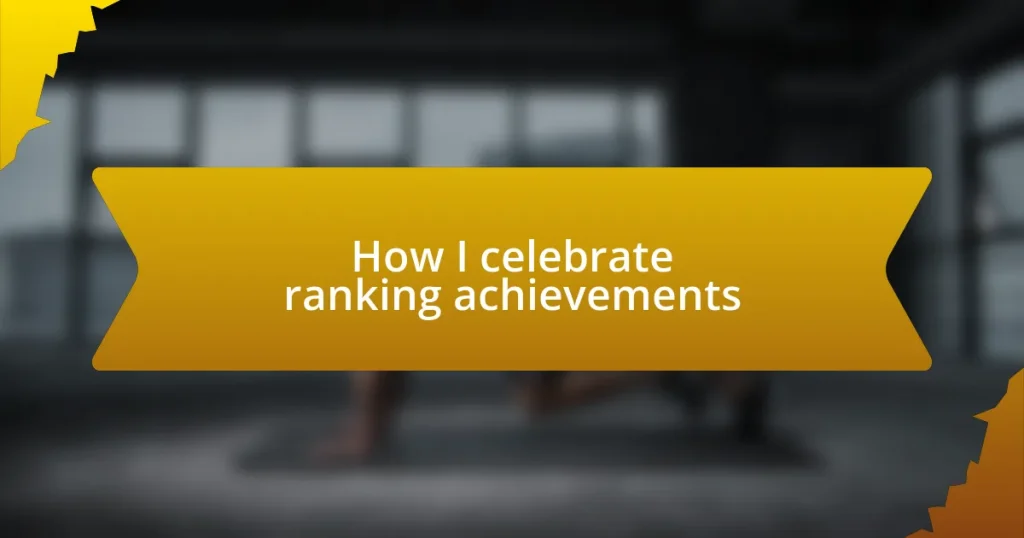Key takeaways:
- Establish a clear analysis framework by defining learning goals and categorizing match data.
- Collect both quantitative metrics (like win-loss ratio) and qualitative insights (such as emotional reflections) to gain a comprehensive understanding of performance.
- Identify key performance indicators (KPIs) to focus training efforts on specific weaknesses, enhancing accountability in practice.
- Implement insights from past matches and video analysis to improve decision-making, patience, and overall gameplay strategy.

Setting Up Your Analysis Framework
Establishing a solid analysis framework begins with defining what you want to learn from your matches. I remember looking back on a particularly challenging game and thinking, “What could I have done differently?” Identifying specific areas of focus, such as strategy, decision-making, or emotional control, sets the foundation for a comprehensive review.
Next, it’s essential to gather and organize the data from your matches. I’ve found that creating a spreadsheet or a simple document helps in categorizing different aspects of each game. How can you find patterns if everything is jumbled together? By classifying your performance into sections—like strengths, weaknesses, and situations—you can insightfully see where you often stumble or shine.
Finally, I recommend setting aside time for reflection after each match analysis. In my experience, the emotional aspects can sometimes overshadow the technical details. Have you ever felt frustrated reviewing a game, only to realize that the small victories matter just as much? Taking a moment to acknowledge your growth amidst the critical evaluation can transform your entire approach to improvement.

Collecting Data from Past Matches
Collecting data from past matches requires a methodical approach to ensure you’re capturing valuable insights. I remember the first time I attempted to analyze my game performance; I felt a bit overwhelmed by the sheer volume of details. So, I began by focusing on specific statistics like my win-loss ratio, the number of shots taken, and my overall positioning. This structured collection of data helped me identify very tangible patterns that I could actually address in future matches.
It’s also crucial to record qualitative data alongside quantitative metrics. I started keeping a journal where I’d jot down my thoughts and feelings after each match. It offered me a window into my mental state during games—like the times I let anxiety creep in, which negatively impacted my performance. Reflecting on those emotions added another layer to my analysis, helping me understand not just the ‘what’ but the ‘why’ behind my performance.
To make this process even more effective, I recommend maintaining a comparison table to visualize your progress. I found this to be incredibly motivating, as it allowed me to track improvements over time in a clear and concise manner. It’s fascinating to see how my stats evolved, fueling my desire to keep pushing my limits.
| Match | Win-Loss |
|---|---|
| Match 1 | Win |
| Match 2 | Loss |
| Match 3 | Win |

Identifying Key Performance Indicators
Identifying key performance indicators (KPIs) is a pivotal step in analyzing past matches. When I first delved into this task, I realized that not every statistic holds equal weight. For instance, my focus on my first serve percentage helped me uncover how often missed serves contributed to lost games. By honing in on aspects like this, I could shape my training regimen to target my weaknesses more effectively.
To identify effective KPIs, consider the following metrics:
- Win-Loss Ratio: Essential for assessing overall performance.
- First Serve Percentage: Indicates serving effectiveness; crucial for gaining an edge.
- Unforced Errors: Reveals areas where focus and accuracy can improve.
- Shots on Target: Evaluates offensive consistency and decision-making.
- Average Rally Length: Provides insights into endurance and strategic play.
Tracking these indicators not only clarified my strengths and weaknesses but also brought a certain level of accountability to my practice sessions. It felt empowering to base my growth on specific data, reinforcing that every point I worked on had a purpose in my journey to improvement.
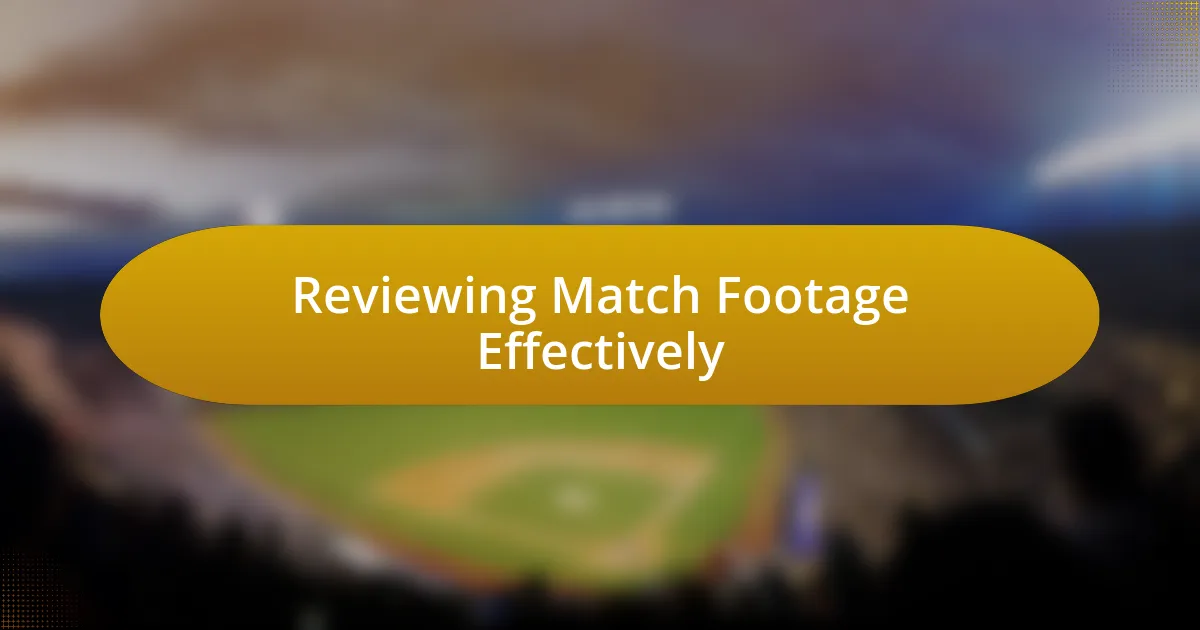
Reviewing Match Footage Effectively
To review match footage effectively, it’s essential to have a clear focus. When I started analyzing my matches, I found it overwhelming to sift through lengthy videos. However, I discovered that narrowing down to specific segments—like crucial game points or problematic rallies—made all the difference. Isn’t it so much easier to spot areas for improvement when you’re not trying to digest hours of footage at once?
While watching the footage, I would often jot down notes in real-time. This practice allowed me to capture my feelings and reactions, making it easier to correlate them with my performance later. For example, I vividly remember feeling particularly stressed during a match point that I ultimately lost. Noting that emotional response helped me realize how mental pressure influenced my gameplay decisions and, subsequently, led me to develop better coping strategies. Have you ever felt like your mindset during a match directly impacted your performance?
Lastly, discussing the footage with a coach or a peer can open up new perspectives. I recall a time when I watched a game with a teammate who pointed out a pattern I completely missed. Their fresh set of eyes helped me understand how to exploit my opponent’s weaknesses more effectively. Often, collaborating with others reveals insights that solo analysis simply can’t provide. Why not tap into that collective wisdom for your own growth?
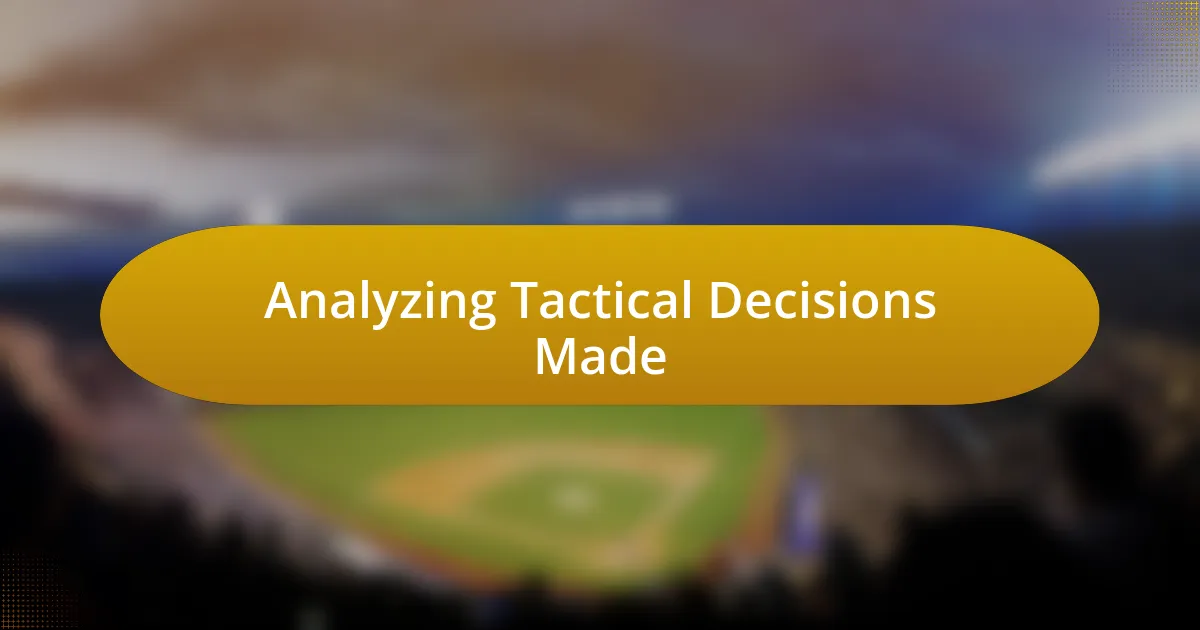
Analyzing Tactical Decisions Made
Analyzing the tactical decisions made during a match was a huge eye-opener for me. After a tough loss, I carefully reviewed the game to pinpoint moments where my positioning fell short. I remember recognizing a critical point where I hesitated to shift left, which allowed my opponent to exploit the open space. It’s amazing how a split-second decision can shift the entire momentum of a match, isn’t it?
I also found that considering my opponent’s strategies was crucial. During one particularly challenging match, I noticed how my rival frequently baited me into making aggressive shots, only to counter effectively. Reflecting on this tactic post-match helped me realize the importance of patience in my own gameplay. Have you ever felt frustrated getting drawn into a pattern that wasn’t your style? Understanding this made me rethink my approach in future encounters.
Another insightful moment came from analyzing when I chose to attack versus defend. In one match, I had a terrible urge to go for a risky shot, which ultimately backfired. Watching that moment back, I felt a mix of frustration and embarrassment, but it was also enlightening. It taught me that sometimes, the best tactical decision is the safest one. Have you ever second-guessed a pivotal decision and wished you could take it back? Those reflections have shaped how I approach similar situations in future matches.

Implementing Learnings in Future Matches
Implementing the lessons learned from my past matches has been transformative. For instance, after one particularly grueling match, I vowed to never let hesitation dictate my movements again. The next time I faced a similar situation, I made a point to trust my instincts, and it paid off—my confidence soared. Isn’t it empowering to realize that the experiences of the past can guide our present decisions?
I also took a closer look at my reaction to my opponent’s strategies. In a match where I fell prey to a consistent feint, I realized it stemmed from my impatience. By consciously slowing down and analyzing their moves in real-time, I began to anticipate their attacks better. Reflecting on that experience helped me embrace a strategic mindset rather than a reactive one. Have you ever had to remind yourself that patience can be a game-changer?
Moreover, integrating video analysis into my preparation brought a new dimension to my training. Watching several past matches allowed me to pinpoint recurring errors. I remember a moment when I consistently overcommitted to one side, leaving myself vulnerable. By addressing this issue in practice, I’ve gained a more balanced approach that empowers me in pressure situations. How often do we overlook the simple tweaks that can lead to significant improvements? Each adjustment has made me feel more in control, and the results have been encouraging.










